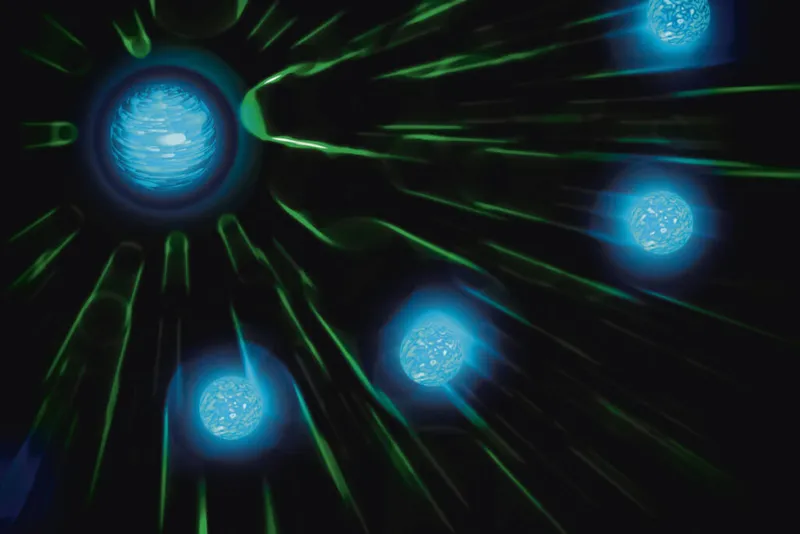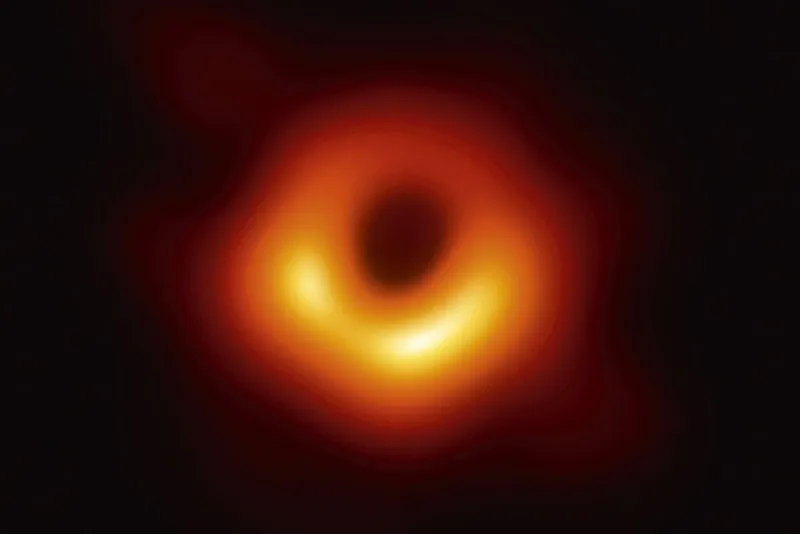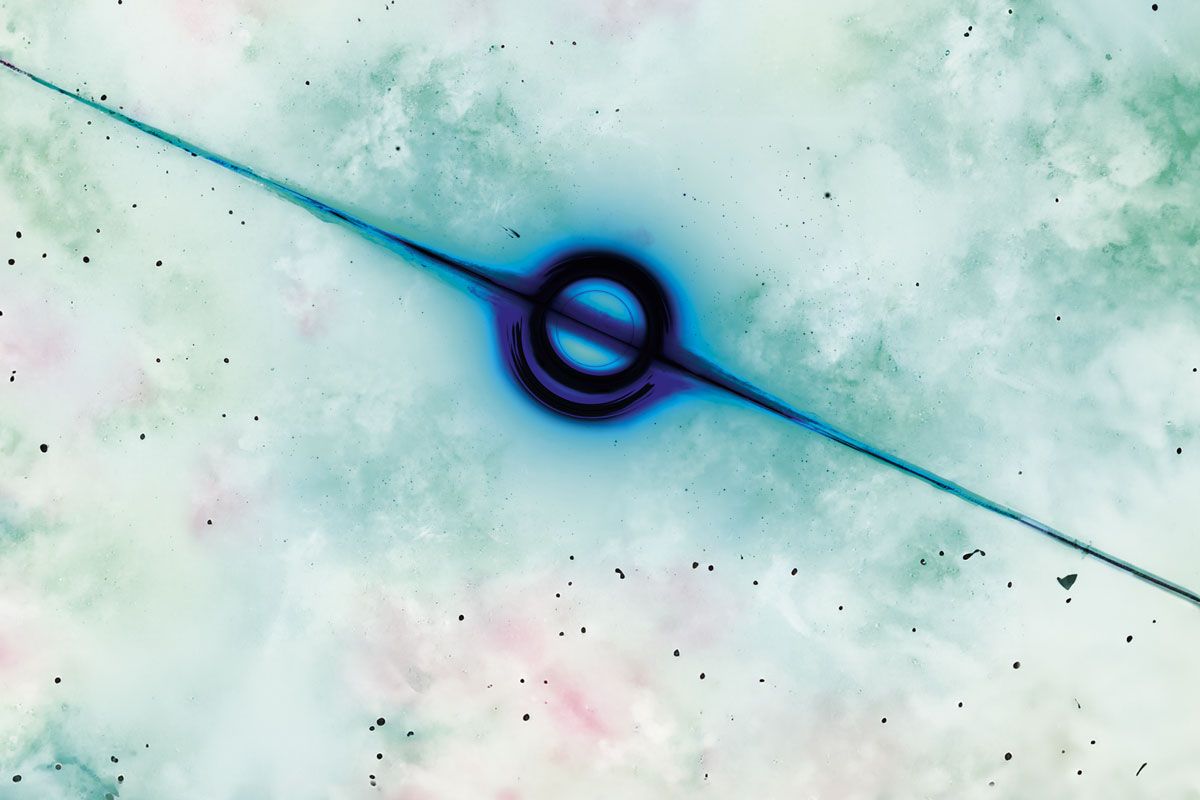Perhaps the most surprising scientific discovery of the last decade is that the universe is teeming with black holes.
They have been found in a surprising variety of sizes: some only slightly more massive than the Sun, others billions of times larger. And they have been detected in many different ways: by radio emission from matter falling toward the hole; by their effect on the stars which orbit them; from the gravitational waves emitted by their merger; and by the extremely strange distortion of light they cause (remember the “Einstein ring” seen in pictures of Sagittarius A*, the supermassive black hole at the center of the Milky Way that graced the front pages of the world’s newspapers not so long ago).
The space we inhabit is not smooth – it is cut like a colander by these holes in the sky. The physical characteristics of all black holes are predicted by Einstein’s theory of general relativity and are well described by the theory.
Everything we know about these strange objects so far matches Einstein’s theory perfectly. But there are two key questions that Einstein’s theory does not answer.
The first: when matter enters the hole, where does it go next? Second: how do black holes end? Compelling theoretical arguments, first understood by Stephen Hawking several decades ago, show that in the distant future, after a life that depends on its size, a black hole shrinks (or, as physicists say, “evaporates”), emitting hot radiation now known as Hawking radiation.
This causes the hole to get smaller and smaller until it becomes tiny. But what happens after that? The reason these two questions are still unanswered, and that Einstein’s theory does not provide an answer, is that they both involve quantum aspects of spacetime.
That is, both involve quantum gravity. And we still don’t have an established theory of quantum gravity.
Attempt to answer
However, there is hope because we have preliminary theories. These theories have not yet been established because they have not yet been supported by experiments or observations.
But they are advanced enough to give us tentative answers to these two important questions. And so we can use these theories to make an educated guess about what’s going on.
undefined
Probably the most detailed and developed theory of quantum spacetime is loop quantum gravity, or LQG, a conditional theory of quantum gravity that has been steadily developing since the late 1980s.
Thanks to this theory, an interesting answer to these questions appeared. This answer is given by the following scenario. The interior of a black hole evolves until it reaches a phase where quantum effects begin to dominate.
This creates a powerful repulsive force that reverses the dynamics of the collapsing black hole’s interior, causing it to “bounce”. After this quantum phase described by LQG, the space-time inside the hole is again governed by Einstein’s theory, except now the black hole is expanding, not contracting.
The possibility of an expanding hole was indeed predicted by Einstein’s theory, in the same way that black holes were predicted. This is a possibility that has been known about for decades; so long, in fact, that this corresponding space-time region even has a name: it’s called a “white hole.”
Read more:
Same idea, but in reverse
The name reflects the idea that a white hole is, in a sense, the opposite of a black hole. One can think in the same way that a ball bouncing upward follows an upward trajectory that is the opposite of the downward trajectory taken when that ball falls.
A white hole is a space-time structure similar to a black hole, but with time reversed. Inside a black hole, things fall; inside a white hole, however, things come out. Nothing can come out of a black hole; similarly, nothing can enter a white hole.
From the outside, what happens is that at the end of its evaporation, a black hole, which is now small because it has evaporated most of its mass, mutates into a small white hole. LQG shows that such structures are made quasi-stable by quantum effects, so they can live for a long time.
White holes are sometimes called “leftovers” because they are what remains after a black hole evaporates. The transition from a black hole to a white hole can be seen as a “quantum jump”. This is similar to Danish physicist Niels Bohr’s concept of quantum jumps, in which electrons jump from one atomic orbit to another when they change energy.

Quantum jumps cause atoms to emit photons and are what cause the emission of light that allows us to see objects. But LQG predicts the size of these small remnants. This leads to a characteristic physical consequence: quantization of geometry. In particular, LQG predicts that the area of any surface can only have certain discrete values.
The horizon area of the white hole remnant should be given by the smallest non-vanishing value. This corresponds to a white hole with a mass of a fraction of a microgram: roughly the weight of a human hair.
This scenario answers the two questions posed earlier. What happens at the end of the evaporation is that the black hole quantum jumps into a long-lived small white hole. And matter that falls into a black hole can later come out of that white hole.

Most of the matter’s energy will have already been emitted by Hawking radiation—low-energy radiation emitted by the black hole due to quantum effects that cause it to evaporate. What comes out of the white hole is not the energy of the matter that fell into it, but residual low-energy radiation that nevertheless carries all the residual information about the matter that fell into it.
An intriguing possibility raised by this scenario is that the mysterious dark matter whose effects astronomers see in the sky may actually be formed, in whole or in part, by tiny white holes generated by ancient evaporated black holes. They could have been produced in the early phases of the universe, possibly in the phase before the Big Bang, which also seems to be predicted by LQG.
This is an attractive possible solution to the mystery of the nature of dark matter, as it provides an understanding of dark matter that relies solely on general relativity and quantum mechanics, both well-established aspects of nature. It also does not add ad hoc field particles or new dynamical equations, as most of the alternative preliminary hypotheses for dark matter do.
next steps
So can we detect white holes? Direct detection of a white hole would be difficult because these small objects interact with the space and matter around them almost uniquely through gravity, which is very weak.
It is not easy to detect a hair using only its gravitational pull. But perhaps this will not remain impossible as technology advances. Ideas have already been proposed to do this using detectors based on quantum technology.
If dark matter is made up of the remnants of white holes, a simple estimate shows that several of these objects could fly through a space the size of a large room every day. For now, we have to study this scenario and its compatibility with what we know about the universe, waiting for technology to help us detect these objects directly.
However, it is surprising that this scenario was not considered before. The reason can be found in a hypothesis accepted by many theorists with a background in string theory: a strong version of the so-called “holographic” hypothesis.
According to this hypothesis, the information in a small black hole is necessarily small, which contradicts the above idea. The hypothesis is based on the idea of eternal black holes: from a technical point of view, the idea that the horizon of a black hole is necessarily an “event” horizon (an “event” horizon is by definition an eternal horizon). If the horizon is eternal, what goes on inside is effectively lost forever, and a black hole is uniquely characterized by what can be seen outside.
But quantum gravitational phenomena disrupt the horizon when it has become small, preventing it from being eternal. So the horizon of a black hole is not an “event” horizon. The information it contains can be large, even when the horizon is small, and can be recovered after the black hole phase, during the white hole phase.
Curiously, when black holes were studied theoretically and their quantum properties were neglected, the eternal horizon was considered their defining property. Now that we understand black holes as real objects in the sky and study their quantum properties, we realize that the idea that their horizon must be eternal is just an idealization.
The reality is more subtle. Perhaps nothing is forever, not even the horizon of a black hole.
Read more:



